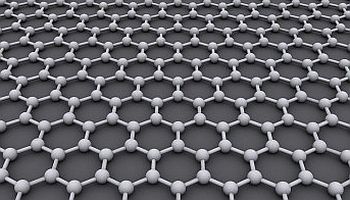Scientists Achieve Advance Toward Graphene Transistor

Researchers at Manchester University have found a way of creating viable graphene transistors, without lowering the material’s extraordinary conductivity
Researchers at Manchester University have taken another step towards commercially viable graphene transistors with a technique for improving the wonder-material’s on-off ratio. The work is part of a government-funded push to get Britain at the forefront of graphene development.
Graphene’s low resistance to the flow of electrons offers the promise of a new level of speed in computer circuits, but that property also makes it difficult to develop an effective graphene transistor. Graphene is a sheet-like molecule with a thickness of one carbon atom.
Resistance
Transistors in computer circuits switch power on and off, generating the ones and zeroes used in computer calculations. In graphene’s case, the material’s on/off ratio isn’t naturally very good, meaning that many electrons continue to leak through even when the material is in the “off” state.
The university team said its effort has succeeded in improving graphene’s on/off ratio to a level where it could theoretically be usable in computer circuits. Led by Leonid Ponomarenko, the team is working with Manchester-based Professor Sir Kostya Novoselov and Professor Sir Andre Geim, who shared the 2010 Nobel prize for Physics for their work on graphene.
 The technique developed at Manchester involves sandwiching a layer of molybdenum disulfide between two layers of graphene, allowing the molybdenum to act as an insulator that can allow or prevent electrons from flowing from one layer to the other.
The technique developed at Manchester involves sandwiching a layer of molybdenum disulfide between two layers of graphene, allowing the molybdenum to act as an insulator that can allow or prevent electrons from flowing from one layer to the other.
Normally few electrons can tunnel through the molybdenum, but when voltage is applied more electrons can slip through. By varying the voltage researchers were able to turn the flow of electrons on and off.
Researchers said the technique improves the on/off ratio by a factor of 10 compared with previous experimental transistors, and could be improved further by using a thicker insulating layer.
Future experiments
Previous transistor experiments have included graphene nanoribbons, graphene quantum dots, two-layer graphene and chemical derivatives of the material. However, those techniques improved the on/off ratio at the expense of graphene’s unusually low resistance.
The university said it would next experiment with different materials for the layer “sandwiched” between the two layers of graphene.
Manchester has emerged as the centre of a government programme, first announced last year supported by around £50m, for a national institute of graphene research and commercialisation.
Manchester has been invited to submit proposals for a Graphene Global Research and Technology Hub intended to commercialise graphene, expected by some to replace silicon as the primary material in electronic devices.
Silicon’s replacement
In April a team of researchers at Illinois University in the US claimed that graphene may be a self-cooling material that could result in the production of more efficient and energy-saving devices.
If the Illinois study is correct, the problem that has brought the reduction in silicon chip sizes to a halt could be overcome by graphene. As chip circuitry is reduced in scale, heat production becomes a problem that threatens to fry the chip before it can be tested. This has resulted in Intel, AMD and others looking at multicore processors as a way to increase chip speeds while reducing heat production and efficiency.
Faster Internet
In August 2011 a study showed that graphene could also be an accelerator allowing faster Internet speeds in the future. It could also be used to build more responsive touch-screens, among other uses.